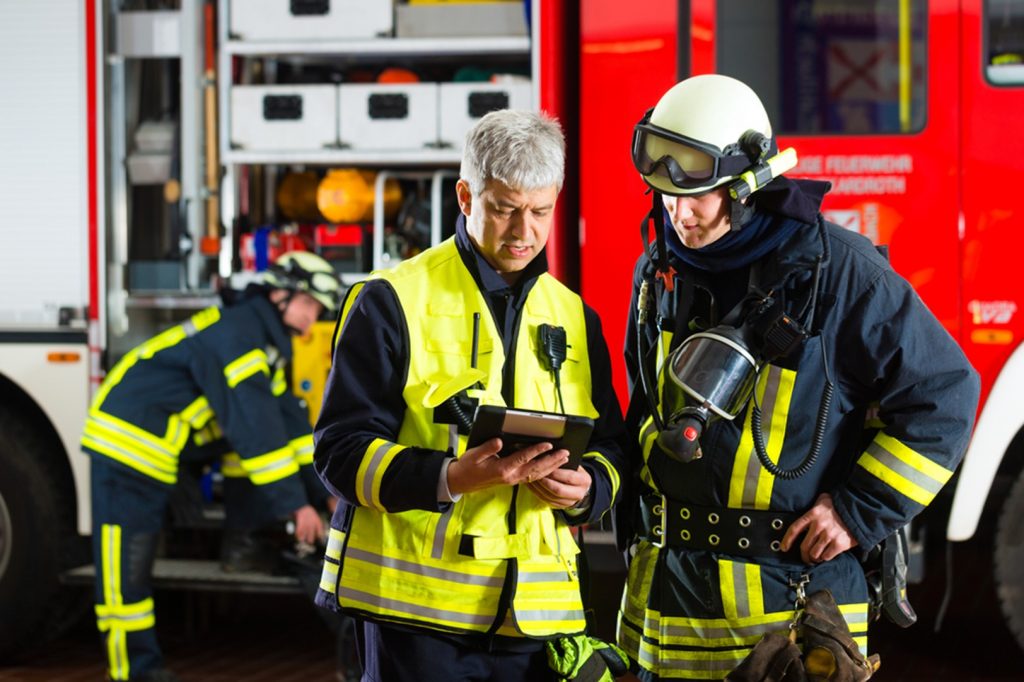Maintaining the quality of our vehicles and equipment is vital to our safety, the safety of those we protect and our operational capability on the fire ground. The International Civil Aviation Organisation (ICAO) Annex 14, Volume 1 Section 9.2 states the following;
“The most important factors bearing on effective rescue in a survivable aircraft accident are: the training received, the effectiveness of the equipment and the speed with which personnel and equipment designated for rescue and firefighting purposes can be put into use.”
Taking the time to properly and thoroughly inspect and maintain your vehicles and equipment will not only extend its life, but it is also essential to your safety and the safety of your crew, and the airport community. Regular inspection, testing and maintenance schedules have the added benefit of supporting greater familiarity and confidence with the use of the equipment, where the firefighter interacts with the equipment on a regular basis.
Fire service management and its personnel should understand the strategic advantage of the many times when a piece of equipment is handled, or when a vehicle is being tested or operated. There are many benefits of a robust equipment inspection program that includes the concept of “I touch it, I test it”, supporting greater equipment familiarity, confidence, and enhanced competence in its use, both in day-to-day operations and long-term operating effectiveness.
“I touch it, I test it” means that every opportunity for interaction with a piece of equipment or a vehicle should be an opportunity to look at it in some way for its condition, operability, and general appearance. We often mindlessly handle our vital tools-of-the-trade including Personal Protective Equipment (PPE), hoses, branches, radios and breathing apparatus, without operating them by opening a valve, turning them on or checking their fluid level.
Often, fire service personnel view contact with a piece of equipment as a passive activity that involves taking equipment from a vehicle locker, or the cleaning of a vehicle as part of a routine practice. Personnel should think about what is in their hands, what is being done, and what it means to the job, particularly in relation to how it will be used during a real incident.
If you are cleaning a piece of equipment, take a second or two to check the fluid level, the condition of a rope, the sharpness of a blade, the smoothness of the turn of a dial, or something else that adds no more time to your activity, but makes it a far more productive and valuable session. Opening the equipment locker of a vehicle, placing tools and equipment out onto the floor, memorising the configuration of the equipment in the locker in your head or on paper, and then returning the equipment to the locker is an ideal time to test every piece of equipment you touch. Seeking out every opportunity to engage with your equipment helps turn a single-purpose, mundane activity into one with multiple worthwhile objectives and outcomes.
The attention to detail that you applied when you first joined the service often waivers with time, and an attitude of ‘familiarity’ can make way for dangerous complacency. The daily inspection process that involved carefully inspecting each piece of equipment systematically and diligently marking the daily inspection checklist now involves a quick visual check – opening the locker and assuming everything is there and is going to operate as it is designed. Routine inspections in the fire service are often loathed and approached with that kind of attitude, or even not done at all! I have seen this first hand.
We must understand the importance of ensuring the equipment and vehicles we use have the highest level of performance when on the fire ground – it can’t afford to fail! We need to hear actual case studies where properly inspected and maintained equipment meant the difference in outcomes by saving a civilian, a building or a colleague. How a piece of equipment or vehicle failed and made a dangerous situation worse or even injured a firefighter, or how the time between a routine inspection and an emergency provided the opportunity to put into practice “I touch it, I test it” which discovered an issue with the equipment that if not discovered, may have led to a disaster and/or potential loss of life.
“I touch it, I test it” will bring greater accountability for the equipment we use and so greatly rely on. This will make us more familiar not just with the location or appearance of equipment, but also with the use and maintenance of it, supporting a more capable Airport Emergency Service.
Peter McMahon
Managing Director | Aviation Rescue Services


